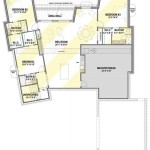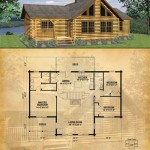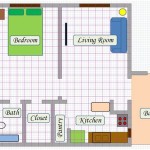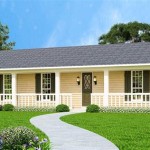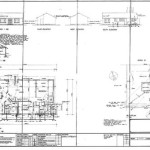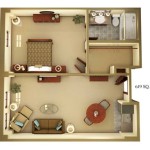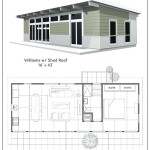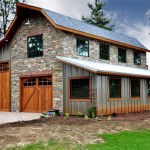Floor Plan Ideas For Small House
Designing a small house floor plan requires a strategic approach to maximize space and functionality. The goal is to create a living environment that feels both spacious and comfortable, despite limited square footage. Careful consideration must be given to layout, storage solutions, and the overall flow of the house. Optimizing natural light and utilizing multi-functional furniture are also crucial elements in successfully executing a small house design.
The design process often involves trade-offs. Prioritizing essential needs over excessive belongings becomes a necessity. The floor plan needs to reflect a lifestyle that emphasizes simplicity and organization. This may involve re-evaluating typical room sizes and considering open-concept designs that blur the lines between traditional living spaces. Ultimately, the success of a small house floor plan lies in its ability to provide a comfortable and efficient living space that caters to the specific needs of the occupants.
Prioritizing Open-Concept Living
One of the most effective strategies for maximizing space in a small house is adopting an open-concept layout. This involves combining the living room, dining area, and kitchen into one contiguous space. This approach eliminates the need for walls, which can visually break up the space and make it feel smaller. An open-concept layout promotes a sense of spaciousness and allows for better natural light distribution throughout the house. Furniture arrangement and strategic use of rugs can help to define distinct zones within the open space.
When designing an open-concept layout, it is essential to consider traffic flow patterns. The floor plan should allow for easy movement between different areas without feeling cramped or cluttered. Minimizing obstructions and maintaining clear pathways are crucial for creating a functional and comfortable living environment. Careful consideration should also be given to noise control, as sounds can travel more easily in open spaces. Acoustic treatments, such as rugs, curtains, and upholstered furniture, can help to mitigate noise and improve sound quality.
The kitchen within an open-concept design often serves as a focal point. Integrating the kitchen seamlessly into the living space requires thoughtful design choices. A kitchen island can provide additional counter space and storage while also serving as a visual barrier between the kitchen and living areas. Selecting appliances and finishes that complement the overall aesthetic of the house can help to create a cohesive and harmonious design. Adequate ventilation is also crucial in an open-concept kitchen to prevent cooking odors from permeating the entire house.
Optimizing Vertical Space and Storage
In a small house, vertical space is a valuable asset that should be fully utilized. Tall ceilings, if available, can be used to create a sense of spaciousness and grandeur. Installing shelves that reach the ceiling can provide ample storage without taking up valuable floor space. Bunk beds are an excellent option for maximizing sleeping space in children's rooms or guest rooms. Loft areas can be created to serve as home offices, reading nooks, or additional storage spaces.
Storage solutions are paramount in a small house floor plan. Built-in storage, such as shelves, cabinets, and drawers, can be integrated into the walls to minimize clutter and maximize space. Multi-functional furniture, such as storage ottomans and sofa beds, can serve dual purposes and eliminate the need for separate storage units. Under-bed storage is another effective way to utilize otherwise wasted space. Organizing belongings efficiently and decluttering regularly are essential for maintaining a tidy and functional small house.
Consider incorporating vertical storage solutions in every room of the house. In the kitchen, utilize wall-mounted shelves for storing dishes, spices, and other kitchen essentials. In the bathroom, install a medicine cabinet over the sink and add shelves above the toilet for storing toiletries. In the living room, a wall-mounted entertainment center can house a television, media devices, and other accessories. By thinking vertically, it is possible to create ample storage without sacrificing valuable floor space.
Strategic Use of Natural Light and Mirrors
Natural light can significantly impact the perception of space in a small house. Maximizing natural light is crucial for creating a bright and airy living environment. Large windows and skylights can flood the house with daylight, making it feel more spacious and inviting. Avoid using heavy curtains or blinds that block out natural light. Instead, opt for sheer curtains or blinds that allow light to filter through while maintaining privacy.
The placement of windows is also important. Consider orienting windows to capture the best natural light throughout the day. South-facing windows provide the most sunlight during the day, while east-facing windows capture the morning sun. North-facing windows provide consistent, indirect light, which is ideal for artists and photographers. West-facing windows can provide warm afternoon light, but they can also cause glare and overheating.
Mirrors are another powerful tool for creating the illusion of space. Strategically placing mirrors throughout the house can reflect light and visually expand the room. A large mirror on a wall can make a small room feel twice as big. Mirrors can also be used to reflect views of the outdoors, creating a sense of connection to nature. Consider placing a mirror opposite a window to amplify the amount of natural light in the room. Mirrors can also be used to conceal storage areas or create hidden doorways, adding an element of surprise and functionality to the small house design.
Furthermore, light paint colors reflect more light than dark colors, making the space feel larger. Consider painting the walls and ceilings in light, neutral tones such as white, cream, or light gray. These colors will help to brighten the room and create a sense of spaciousness. Avoid using dark or bold colors, which can make the room feel smaller and more confined. Light-colored flooring can also contribute to a brighter and more spacious feel.
In addition to maximizing natural light, consider the use of artificial lighting. Layered lighting, which combines ambient, task, and accent lighting, can create a warm and inviting atmosphere. Ambient lighting provides overall illumination, task lighting provides focused light for specific activities, and accent lighting highlights architectural features or artwork. Using a combination of different types of lighting can create a more dynamic and visually appealing living environment.
Smart lighting solutions can also enhance the functionality of a small house. Dimmable lights allow you to adjust the brightness of the room to suit different activities and moods. Motion-sensor lights can provide convenient and energy-efficient lighting in hallways and bathrooms. Smart bulbs can be controlled remotely via a smartphone or voice assistant, allowing you to adjust the lighting even when you are not at home.
Multi-Functional Furniture and Adaptable Spaces
In a small house, every piece of furniture should ideally serve multiple purposes. Sofa beds offer seating during the day and transform into a bed for guests at night. Coffee tables with storage compartments can conceal magazines, remote controls, and other items. Ottomans with lift-up tops can provide seating and storage. Folding chairs can be stored away when not in use. Selecting furniture that is both functional and aesthetically pleasing is essential for maximizing space and creating a comfortable living environment.
Adaptable spaces are also crucial for a small house floor plan. A dining table that can be extended for dinner parties can be collapsed to save space when not in use. A home office that can be converted into a guest room provides flexibility for different needs. A living room that can be transformed into a yoga studio allows for exercise and relaxation. Designing spaces that can be easily adapted to different purposes can significantly enhance the functionality of a small house.
Modular furniture systems are another excellent option for small houses. These systems allow you to customize the configuration of your furniture to suit your specific needs and space. You can add or remove modules as needed, creating a flexible and adaptable living environment. Modular sofas, shelving units, and storage systems are all available in a variety of styles and materials.
Furthermore, consider using lightweight and portable furniture that can be easily moved around. This will allow you to reconfigure your living space as needed and create different zones for different activities. Folding screens can be used to divide a room into smaller areas or to create privacy. Rolling carts can be used to transport items from one room to another.
Creating a functional and comfortable small house floor plan requires careful planning and attention to detail. By prioritizing open-concept living, optimizing vertical space and storage, utilizing natural light and mirrors, and incorporating multi-functional furniture and adaptable spaces, it is possible to create a living environment that is both spacious and efficient, despite limited square footage.

Small House Design 2024001 Pinoy Eplans Floor Plans

Small House Design 2024005 Pinoy Eplans Modern Plans Layout

Small House Plans With S Houseplans Blog Com

10 Small House Plans With Open Floor Blog Homeplans Com

18 Small House Designs With Floor Plans And Decors

10 Small House Plans With Open Floor Blog Homeplans Com

Small House Design Series Shd 2024008 Pinoy Eplans

Small House Plan Examples

Small House Plans And Design Ideas For A Comfortable Living

Longshoremans Daughter Small House Floor Plans Tiny

